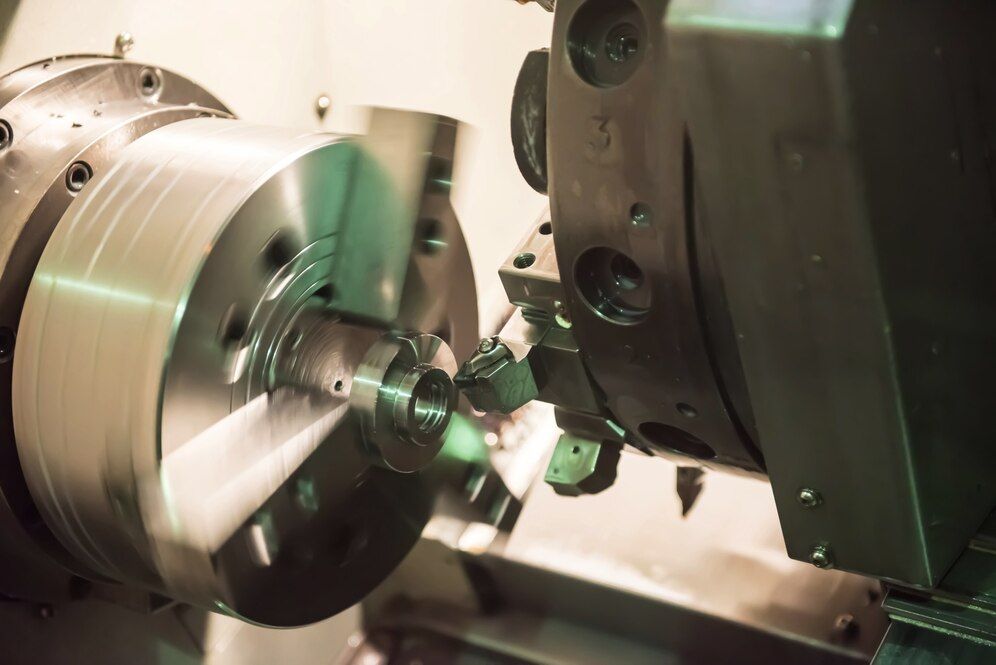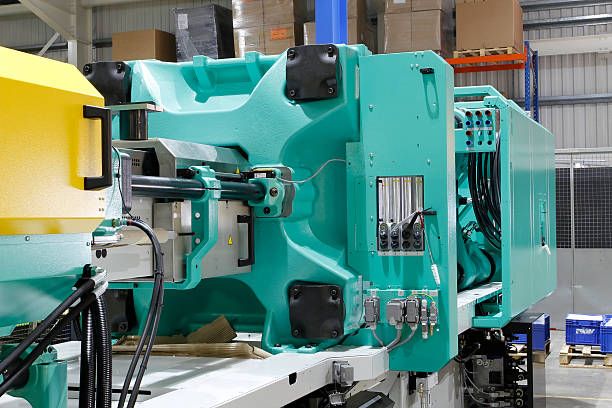Unlock your product's potential with our One-stop solutions!
+86-755-83222882

GET QUOTE
What is the Difference Between CNC and Injection Molding?
In the world of manufacturing and product design, understanding the various techniques available for creating parts and components is crucial. Two of the most prominent methods are CNC machining and injection molding. These processes are essential for producing a wide range of products, from intricate prototypes to high-volume consumer goods. But what exactly is the difference between CNC and injection molding, and how do you determine which method is best for your project? Let’s delve into these questions and more.
Understanding CNC Machining
What is CNC Machining?
CNC (Computer Numerical Control) machining is a subtractive manufacturing process. It involves the use of computer-controlled machines to remove material from a solid block, known as a blank or workpiece, to create the desired shape. CNC machines can include lathes, mills, routers, and grinders, each designed for specific types of cutting and shaping tasks.
How Does CNC Machining Work?
The process begins with a digital 3D model created using CAD (Computer-Aided Design) software. This model is then converted into a series of precise instructions (G-code) that the CNC machine follows to cut and shape the material. The machine operates along multiple axes (typically three to five) to achieve complex geometries with high precision.
Advantages of CNC Machining
CNC machining offers several advantages, including high precision, versatility, customization, and speed. CNC machines can achieve extremely tight tolerances, making them ideal for parts that require exact specifications. They can work with a wide range of materials, including metals, plastics, wood, and composites. This process is suitable for low-volume production and custom parts, providing rapid turnaround times for prototypes and small production runs.
Disadvantages of CNC Machining
Despite its benefits, CNC machining has some drawbacks. Since the process is subtractive, there is a significant amount of material waste. Additionally, the initial setup and tooling can be expensive, especially for complex parts.
Understanding Injection Molding
What is Injection Molding?
Injection molding is a manufacturing process used for producing large volumes of identical parts. It involves injecting molten material, usually plastic, into a mold cavity, where it cools and solidifies into the final part shape.
How Does Injection Molding Work?
The injection molding process consists of several key steps. First, clamping ensures that the mold is held securely in place. Next, molten plastic is injected into the mold cavity under high pressure. As the plastic cools and hardens inside the mold, it takes on the shape of the final part. Finally, the finished part is ejected from the mold.
Advantages of Injection Molding
Injection molding offers numerous benefits, particularly for mass production. It boasts high efficiency, as the process can produce large quantities of parts very quickly once set up. The parts produced are identical, ensuring uniformity in high-volume production. Additionally, injection molding is material-efficient, with minimal waste since excess material can often be recycled. This process is also cost-effective for high-volume production due to the low per-unit cost.
Disadvantages of Injection Molding
However, injection molding also has its limitations. The high initial costs for designing and manufacturing the molds can be a significant barrier. The initial setup and mold creation can also take a considerable amount of time, leading to long lead times. Additionally, while primarily used for plastics, some metals and ceramics can also be used, though the material options are somewhat limited compared to other manufacturing processes.
Key Differences Between CNC Machining and Injection Molding
Material Usage
One of the primary differences between CNC and injection molding is how they use material. CNC machining is subtractive, meaning it removes material to create the part, which often leads to waste. Injection molding is additive, as it involves injecting material into a mold, resulting in minimal waste.
Production Volume
CNC machining is ideal for low to medium production volumes, custom parts, and prototypes due to its flexibility and lack of need for mold creation. In contrast, injection molding is perfect for high-volume production because, once the mold is made, the cost per part is very low.
Design Complexity and Flexibility
CNC machining offers more flexibility for complex geometries and intricate details because it is controlled by precise computer instructions and can work with a wide variety of materials. Injection molding, while capable of producing complex parts, is limited by the mold design, and changes to the part design require new molds.
Lead Time and Setup
CNC machining typically has shorter lead times, especially for prototypes and small runs, because it doesn’t require the creation of molds. Injection molding, however, has longer initial setup times due to the design and production of molds, but once set up, it can produce parts at a much faster rate.
Cost Considerations
The cost dynamics between CNC machining and injection molding are quite different. CNC machining has lower setup costs but higher costs per part for large volumes. Injection molding has higher initial costs due to mold creation but significantly lower costs per part in mass production scenarios.
Choosing the Right Process for Your Project
Factors to Consider
When deciding between CNC machining and injection molding, several factors should be taken into account:
- Production Volume: For small runs or one-off prototypes, CNC machining is usually more cost-effective. For high-volume production, injection molding is typically the better choice.
- Material Requirements: Consider the material you need for your parts. CNC machining can handle a broader range of materials, including metals and plastics. Injection molding is mainly suited for plastics but can also work with some metals and ceramics.
- Part Complexity: If your design requires intricate details and tight tolerances, CNC machining might be more suitable. Injection molding can handle complex parts but with limitations related to the mold design.
- Budget: Initial budget constraints might steer you towards CNC machining for its lower setup costs, whereas a higher budget and need for mass production would justify the investment in injection molding.
Real-World Applications
- Prototyping: CNC machining is often preferred for prototyping due to its speed and flexibility. It allows for rapid iteration and changes without the need for costly molds.
- Consumer Products: Injection molding is widely used for producing consumer goods like toys, kitchenware, and electronics casings, where high-volume production and consistency are essential.
- Aerospace and Automotive: Both CNC machining and injection molding are used in these industries. CNC is used for parts requiring high precision and strength, while injection molding is used for plastic components like dashboards and interior parts.
Conclusion
Understanding the difference between CNC machining and injection molding is crucial for making informed decisions in manufacturing. Each process has its strengths and weaknesses, and the right choice depends on your specific needs, including production volume, material requirements, part complexity, and budget. By carefully considering these factors, you can select the most appropriate method to ensure the success of your project.
Whether you need the precision and flexibility of CNC machining or the efficiency and consistency of injection molding, both processes play pivotal roles in modern manufacturing. As technology continues to advance, these methods will undoubtedly evolve, offering even more capabilities and possibilities for innovation.
For those looking to leverage the benefits of injection molding, SZOMK is a leading plastic injection molding manufacturer and company. SZOMK provides professional expertise and high-quality plastic injection molding services tailored to diverse industry needs. Contact us today to learn more about how we can support your manufacturing projects.


